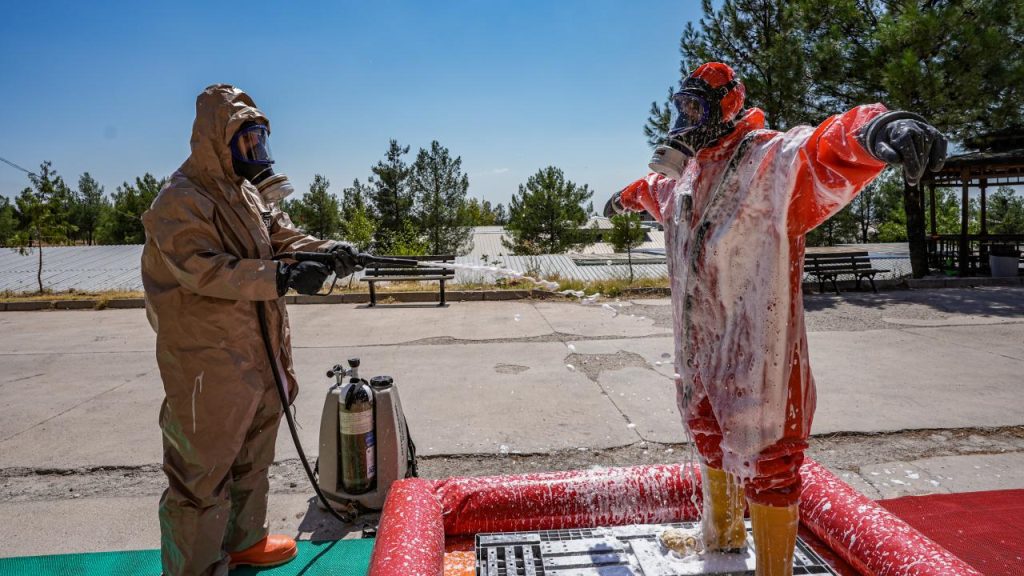In Diyarbakir, where temperatures sometimes exceed 40 degrees, the Search and Rescue Unit of the Provincial Disaster and Emergency Management Directorate continues its training activities without interruption. The teams, who are responsible for responding to various disasters including earthquakes nationwide, undergo in-service theoretical and practical training that is planned to prepare them to operate in all challenging conditions. In preparation for disasters, the teams dress in appropriate clothing according to the type and degree of threat and equip themselves with life tubes, continuing their training in scorching temperatures that make movement difficult.
The trainings conducted by the Disaster and Emergency Management Authority (AFAD) teams for chemical, biological, radiological, and nuclear threats, coded as “CBRN,” are implemented with the principles of “zero error” and “maximum capability.” Under the scorching sun, teams face challenging training scenarios. For example, they are deployed to a training area in special vehicles wearing appropriate clothing and equipped with life tubes to respond to a fire at a gas station. The team first conducts a hazardous material scan with a detector in the area and then takes samples. After washing with special cleaning materials, the team leaves the work area, successfully completing the CBRN leakage training planned with a “zero error” motto.
The teams are continuously training to be ready to exhibit maximum performance in possible disasters. They wear appropriate clothing according to the type and degree of threat, equip themselves with life tubes, and complete training scenarios even in the sweltering heat of Diyarbakir. The teams undertake hazardous material scans, take samples, and go through cleaning processes, ensuring they are prepared to handle any situation effectively. By following the principles of “zero error” and “maximum capability,” they successfully complete tasks and remain always ready to respond to any emergency.
The teams’ training activities also include preparation for responding to chemical, biological, radiological, and nuclear threats. Clad in appropriate protective gear, the teams conduct hazard scans, take samples, and follow cleaning procedures to ensure they are prepared to combat any hazardous situation efficiently. By planning their training with a focus on “zero error” and “maximum capability,” the teams are continuously honing their skills to be at their best in emergencies. These dedicated teams, who are always ready and waiting to serve, undergo rigorous training to ensure they can respond effectively to disasters and emergencies, providing critical support to communities in need. In Diyarbakir and beyond, these teams are working tirelessly to improve their capabilities and be prepared for any situation they may face in the line of duty.


